-
Physiognomic sphere of a nose and individuality.
Table of facial sizes in physiognomy.
During physiognomic analyses in frameworks of the nine-level system of a human
face in profile it is
necessary to take into account sizes which facial levels have, as
psychological characteristics are shown with different intensity depending on
facial sizes.
In frameworks of six-level physiognomic system, which is described in the
beginning of this site section, it is possible to apply antonymous definitions
for descriptions of psychological characteristics which correspond to the
increased or reduced sizes of a half-face, and in the nine-level system of
physiognomy too it is possible to apply system of antonymous definitions, that is shown in the table.
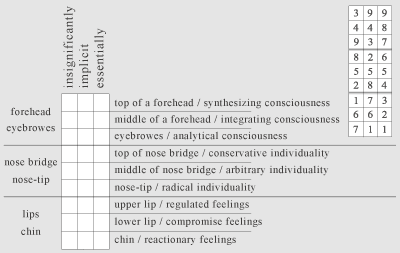 |
Three physiognomic spheres are specified on the left of
the table, and the appropriate psychological values of
nine facial levels of three spheres are specified on the
right. Antonymous definitions are specified above the table. In the right corner is the ratio of numerological numbers of Pythagorean numerology with physiognomic spheres and levels, and in essence parities of numerological numbers with psychological values in frameworks of the nine-level physiognomic system are shown. The detailed information on numbers of Pythagorean numerology look on pages of other web-site: www.numeralgame.64g.ru/en.htm. And also the information on ratio of numbers in numerology with levels of a human face in physiognomy look on pages of this web-site in section which has the name: half faces (concepts 5). |
-
The shown table can be applied to the visual physiognomic analysis.
Namely if any levels of the human half-face are appreciably increased then
correspond with the antonymous definition "essentially", and accordingly in the
table it is possible to note cells in crossing of this antonymous definition with
psychological values which correspond to the increased facial levels.
If any levels of the human half-face are not increased then correspond with
the antonymous definition "insignificantly", and accordingly in the
table it is possible to note cells of crossings of this antonymous definition
with psychological values of not increased facial levels.
If it is impossible to define any levels of the human half-face as increased or
not increased then it is necessary to use the antonymous definition
"implicitly", namely it is necessary to note cells in crossings of this
antonymous definition with psychological values which correspond to facial
levels with the non concrete sizes.
Then according to noted cells in the table it is possible to analyze parities of
psychological values with character traits of the man, and it is actually
possible to correct psychological values according to the visible sizes of human
half faces.
Especially parities of psychological values with antonymous definitions are
necessary for meaning at the analysis of physiognomic sphere of a nose which has
the most contrast proportions in a human face in profile.
I remind that I am not sure in accuracy of the English words which used in
translation of antonymous definitions and psychological values into the English
language.
Physiognomic sphere of a nose (individuality).
The bottom level of a nose corresponds with radical individuality,
and means declaring and public demonstration of own personality.
The middle level of a nose
corresponds with arbitrary individuality, and means features of voluntary
positioning of own personality in comparison with personalized positions of
people.
The top level of a nose corresponds
with conservative or organizing individuality, and means features of identification with collective or common
individuality (co-personality) of people.

|
1st physiognomic type of a half face. Top of nose bridge is expressed. Middle of nose bridge is expressed. Nose-tip is expressed. All levels of a nose are expressed that
means many-valued individuality peculiar to the man who is capable to
show own personality, as radical properties are expressed, and who is capable
to identify displays of own individuality with opinions of people on
collective co-personality, as conservative properties are expressed.
And also such man is capable to stand itself voluntary concerning
people, according to positions which people show in attitudes with the
man, as arbitrary properties are expressed in a context of physiognomy. |

|
2nd physiognomic type of a half face. Top of nose bridge is not expressed. Middle of nose bridge is expressed. Nose-tip is expressed. The man has radical individuality according
to which shows own personality, and has features of voluntary positioning of own personality concerning people, but
the man does not identify itself with
the conventional opinion on collective individuality, or otherwise it is
possible to tell that the man does not identify itself with the unified
sample of common personality in view of physiognomy. |
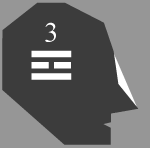
|
3rd physiognomic type of a half face. Top of nose bridge is expressed. Middle of nose bridge is not expressed. Nose-tip is expressed. The man has radical and conservative
properties according to which shows own
personality and
can be similar to the common collective individuality, but he does not correlate
itself to individual displays of separate people, as arbitrary
individuality is not expressed. Namely attitudes of people to the man
are not the reason of appropriate attitude of the man to people, or
otherwise it is possible to tell that the man does not commensurate own
individual displays with personal attitudes of people, if to analyze
shapes of a face in a context of physiognomy. |
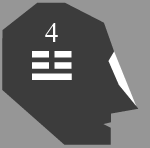
|
4th physiognomic type of a half face. Top of nose bridge is not expressed. Middle of nose bridge is not expressed. Nose-tip is expressed. The most significant is radical
individuality and consequently the man shows own personality, but
arbitrary and conservative features are not expressed,
and consequently the man does not pay attention to personal attitudes of
people and also ignores the common opinion of people on
collective individuality, and in essence he exaggerates displays of own
personality concerning separate people and concerning a society as a whole,
if to look at facial shapes from the point of view of physiognomy. |
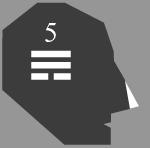
|
5th physiognomic type of a half face. Top of nose bridge is expressed. Middle of nose bridge is expressed. Nose-tip is not expressed. Radical individuality is not
significant and consequently the man underestimates value of own personality,
but conservative and arbitrary individualities are expressed and
consequently the man is involved the common collective individuality, and
he commensurate displays of own personality with personal displays of
people, if to analyze a half face according to concepts of physiognomy. |
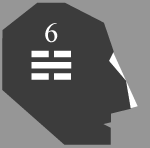
|
6th physiognomic type of a half face. Top of nose bridge is not expressed. Middle of nose bridge is expressed. Nose-tip is not expressed. The most significant is arbitrary
individuality according to which the man compares own individual
displays to individual displays of people, but he ignores public norms of
collective individuality and does not give value to demonstration of own
personality, as conservative and radical features are not
significant. In essence the attitude of this man to people corresponds to
attitudes of people to the man in view of concepts of physiognomy of a
human face in profile. |

|
7th physiognomic type of a half face. Top of nose bridge is expressed. Middle of nose bridge is not expressed. Nose-tip is not expressed. The man is involved (co-present) the
common collective individuality and is not declined to show own personality,
and also ignores coordination of personal displays in mutual relation of
people, as conservative properties are significant, but radical and
arbitrary individual properties are not significant. Namely
individuality of the man is caused by the common norms which have
advantage above own personality or personal displays of people according
to concepts of physiognomy of human facial profiles. |
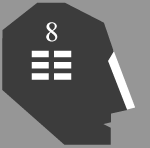
|
8th physiognomic type of a half face. Top of nose bridge is not expressed. Middle of nose bridge is not expressed. Nose-tip is not expressed. All physiognomic levels of a nose are
not expressed. Displays of individuality are not conducting properties
of the man in a context of physiognomy of a human face. |
If to imagine prospective individuality of the man who is the chief then
radical and arbitrary and conservative properties of individuality are shown in
the following.
The first physiognomic type is the unconditional chief who praises own
personality but compares itself to individual properties of subordinates, and also
who is personification of the conventional
collective individuality from the point of view of subordinates.
The second physiognomic type is the chief who praises own personality and
correlates itself to individual properties of subordinates, but such chief is not
personification of collective individuality which is capable to unite people.
The third physiognomic type is the chief who praises own personality and
personifies public collective individuality, but who does not take into account specific
features of subordinates. Namely such chief concerns to all people equally and
does not distinguish the individual attitude of each subordinate to the own person.
The fourth physiognomic type is the chief who praises own personality but
who is not personification of the conventional
collective individuality from the point of view of subordinates, and who does not distinguish specific features of people.
The fifth physiognomic type is the chief who personifies collective individuality and
unites people, and also who estimates individuality of each subordinate and compares
itself to individual properties of people, but such chief not praises own personality and consequently he no seems
presentable from the point of view of subordinates.
The sixth physiognomic type is the chief who correlates itself to
individualities of subordinates, but he is not representative and does not personify
uniting collective individuality. Namely such chief has no superiority over
subordinates and consequently the attitude to people depends on attitudes
of subordinates to the chief.
The seventh physiognomic type is the chief who personifies collective individuality,
but he does not consider individual distinctions of subordinates and does not
give value to own personality, and in effect such chief unifies people and oneself for
the sake of observance of public interests.
The eighth physiognomic type is the chief who has no necessary managing properties
from the point of view of subordinates.
The following page considers physiognomic sphere of lips and chin, and the appropriate facial levels of human feelings in frameworks of the nine-level system of physiognomy.
-